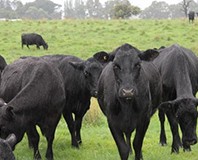Read the latest information on
Foot-and-mouth disease

New approach to managing JD in cattle is now in place
The new, national approach to Johne’s disease (JD) officially commenced on 1 July and all Australian cattle producers are encouraged to become familiar with the changes.
The new approach, endorsed by the cattle industry and Australian governments, is guided by the BJD Framework and focuses on managing on-farm biosecurity risks rather than controlling disease through regulation, said Animal Health Australia’s (AHA) Executive Manager of Biosecurity Services, Duncan Rowland.
“This approach treats JD as just one of many endemic diseases that producers must manage within their business on a day to day basis. Supported by more flexible regulation, producers will be able to make informed decisions about the opportunities and risks associated with purchasing livestock and their suitability for a market,” said Mr Rowland.
A number of changes will occur under the new framework including:
“To ensure Australian producers and interested stakeholders are informed and supported throughout this reform process, industry and governments are developing tools and resources to assist in the transition.
“AHA has released a useful fact sheet, New approach to Johne’s disease in cattle, which clearly outlines what the approach means for the individual producer and also addresses some frequently asked questions,” said Mr Rowland.
In addition, a number of resources are available on the Farm Biosecurity website to help producers manage and avoid diseases such as JD. The Cattle page hosts a range of information including a number of biosecurity videos, whilst the National Farm Biosecurity Reference Manual – Grazing Livestock Production can assist producers to develop their own biosecurity plan.
Additional steps that will take place over the next month include:
AHA will continue to work with industry and government to ensure the Framework is implemented as smoothly and quickly as possible to enhance the biosecurity credentials of Australia’s cattle industry.